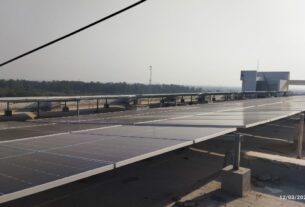The global real estate landscape has always been defined by a handful of cities that set the gold standard: New York, London, Dubai, and Singapore. Yet in 2025, India’s top metros — Delhi and Mumbai — are fast emerging as contenders on this exclusive list. Infrastructure upgrades, policy reforms, and the rising appetite of both domestic and international buyers are pushing Indian property into a new league.
Behind this quiet transformation stand developers who dared to bet early on India’s potential. Among them, Shravan Gupta has played a role in repositioning Indian real estate, steering it closer to international benchmarks. But can Delhi and Mumbai truly compete with the likes of Dubai and Singapore?
India’s Real Estate Surge
Recent data paints a compelling picture:
- Residential prices across India’s top seven cities rose 11% year-on-year, climbing from ₹8,070 to ₹8,990 per sq. ft. between Q2 2024 and Q2 2025.
- In the Mumbai Metropolitan Region, pockets like Thane recorded a 46% jump in prices over just three years, reaching ₹19,800 per sq. ft.
- Housing launches in 2024 hit a decade-high of 372,936 units, a 6.3% rise over the previous year.
These numbers illustrate that India is no longer just playing catch-up; it is creating its own growth story.
Shravan Gupta’s Role in Urban Evolution
While numbers grab attention, urban landscapes are shaped by vision. Gupta, through MGF Group and more recently Kriya Ventures, has been an early advocate of integrated urban communities — blending retail, residential, and lifestyle infrastructure. His foresight in developing premium spaces in Gurgaon and other emerging hubs foreshadowed the suburban boom we are now witnessing.
Rather than speaking in self-promotional terms, his career offers an insight into how Indian developers have learned to anticipate market cycles — shifting focus from city cores to micro-markets and suburban corridors.
[Insert Supporting Infographic: Price appreciation in Indian metros vs global peers]
India vs. Global Cities: The Numbers
|
City / Region |
Annual Price Appreciation |
Rental Yield (%) |
Prime Property – Sq. Ft. for $1M |
|
Delhi |
~6.7% |
2–4% |
~2,238 sq. ft. |
|
Mumbai |
~5.2% |
2–4% |
~1,500–1,800 sq. ft. |
|
Dubai |
+124% since 2020 |
7–11% |
~1,130 sq. ft. |
|
Singapore |
3–5% |
2–3% |
~366 sq. ft. |
*Sources: Economic Times, Financial Express, Global Property Guide*
The Infrastructure Advantage
For Delhi and Mumbai, the real breakthrough lies not in raw pricing but in infrastructure-backed growth. Expanding metro networks, new highways, and airport upgrades are reshaping the investment map. Suburbs once dismissed as “too far” are now the beating heart of new development.
Developers like Shravan Gupta have capitalized on this trend, shifting their focus to premium housing in well-connected suburbs — areas that combine modern amenities with proximity to business districts. This mirrors Dubai’s planned urban sprawl and Singapore’s obsession with connectivity.
Investor Sentiment: The Silent Catalyst
Beyond infrastructure, investor psychology plays a role. Dubai attracts global capital because of tax incentives and investor-friendly regulations. Singapore thrives on its reputation for stability. India’s challenge — and opportunity — is to convert affordability into trust.
This is where private sector credibility matters. By consistently delivering projects that combine quality with timeliness, developers build not just homes but confidence. Gupta’s track record in mixed-use spaces highlights how reputation itself becomes a form of infrastructure.
The Road Ahead
So, can Delhi and Mumbai stand shoulder to shoulder with Dubai and Singapore? The answer depends on how one defines competitiveness:
- For investors seeking high rental yields and global liquidity, Dubai remains unmatched.
- For buyers looking at long-term capital appreciation with affordability, India’s metros present a compelling story.
- For global positioning, Delhi and Mumbai must strengthen regulatory clarity and sustainability practices to attract institutional capital.
Conclusion
India’s rise as a real estate powerhouse is no longer a forecast — it’s unfolding in real time. While Dubai dazzles with its yield and Singapore commands premium space, Delhi and Mumbai are quietly building a different narrative: one of affordability, infrastructure, and scale.
And as this transformation continues, the role of visionary developers — those who anticipated suburban expansion, integrated design, and sustainability — will be recognized as the true architects of India’s urban ascent.



